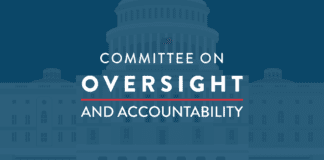Report finds North Korean leader killed hundreds
December 17 marks the 10th year since North Korean dictator Kim Jong-il died and his son Kim Jong-un came to power. Over the past 10 years, the Kim Jong-un regime has continued the public executions of its people just like his father did. However, the latest report by a South Korean human rights group showed that Kim Jong-un’s execution style is different from his father’s. The son seems to be more concerned about leaks of inside information and international monitoring, so he is executing people in isolated areas, or regions far away from the border with China.
The Seoul-based Transitional Justice Working Group (TJWG) released the report “Mapping Killings under Kim Jong-un: North Korea’s Response to International Pressure” on December 15. The report is based on six years of research. The group analyzed satellite imagery and interviewed 683 defectors to examine “how state killing practices have shifted in North Korea under the young leader.” The project documented 442 testimonies on state-sanctioned killings and 30 testimonies on body disposal sites, including burial and cremation sites.
The report said, “North Korea, in response to international criticism, has changed its killing practices, clamping down on potential information leaks by selecting execution sites that are easier to control.”
The TJWG has identified differences in the patterns of public executions during the Kim Jong-un era by focusing on the city of Hyesan, which is on the border with China and is more exposed to the outside world due to its geographical location.
The key difference is that the Kim Jong-un regime carried out most of its public executions in isolated and inconspicuous places a long way from the border and central area of the city. The sites for public executions include Hyesan Airfield and nearby hills, mountains, open terrain and fields.
The testimonies of North Korean defectors also suggested that public executions have not been staged in the center of Hyesan or places near the border with China during the Kim Jong-un era, unlike the previous period. Also noteworthy was that the number of locations mainly used for public executions in Hyesan decreased under Kim Jong-un’s rule.
The testimonies of North Korean defectors also suggested that the number of public executions decreased while Pyongyang has continued to secretly kill people at indoor locations, possibly to avoid international monitoring systems.
“Documenting secret or ‘indoor’ killings is our next step,” said Hubert Younghwan Lee, Executive Director of TJWG. “There are increasing numbers of news reports quoting clandestine information sources inside North Korea about this type of killing over the last five to six years. To track ‘indoor’ killings we will strengthen our cooperation with news platforms that have contacts on the ground through cross-border telecommunication.”
The TJWG documented 27 testimonies of state-sanctioned killing sites, of which 23 were public execution. Of the 23 executions, 21 were by firing squad and 2 were by hanging. The group also identified the reason for the executions under the Kim Jong-un regime.
“The most commonly cited offenses announced at public executions included (in descending order of frequency): watching or distributing South Korean videos (7 instances), drug-related crimes (5), prostitution (5), human trafficking (4), murder or attempted murder (3), and ‘obscene acts’ (3).”
The report introduced one witness at a public execution in Hamheung, North Hamgyong province, in 2012.
“Even when there was fluid leaking from the condemned person’s brain, people were made to stand in line and look at the executed person in the face as a warning message,” the witness testified.
Meanwhile, the Chosun Ilbo newspaper also ran special reports analyzing 10 years of North Korea under Kim Jong-un’s rule, including his persecution style. According to the Institute for National Security Strategy, a de facto think tank of South Korea’s National Intelligence Service, at least 140 senior officials were executed from the beginning of Kim Jong-un’s term through the end of 2016. According to the think tank’s data, around 30 people were executed in 2013 and around 40 people were killed in 2014. Most of the figures were close allies of Jang Song-thaek, Kim Jong-un’s uncle and the second most powerful man before he was executed by anti-aircraft guns by his nephew in 2013.
Kim Jong-un’s politics of fear hit its peak in 2015. He executed at least 60 people in that year. Reasons for execution were random and absurd, such as falling asleep, poor body posture, or clapping without enthusiasm.
Publicly available reports by the intelligence agency on North Korea’s persecution dropped significantly under the Moon Jae-in administration. A source told the Chosun Ilbo newspaper that “Kim Jong-un’s politics of fear remain the same, but the current South Korean administration is very passive about releasing information that can be sensitive to North Korea.” The source added, “internal data suggests that around 700 people were executed during the 10 years of Kim Jong-un’s rule.”
The Moon administration appears to have taken a policy of silence on these executions as it focuses on its last-ditch attempt to end the Korean War and improve relations with Pyongyang.



